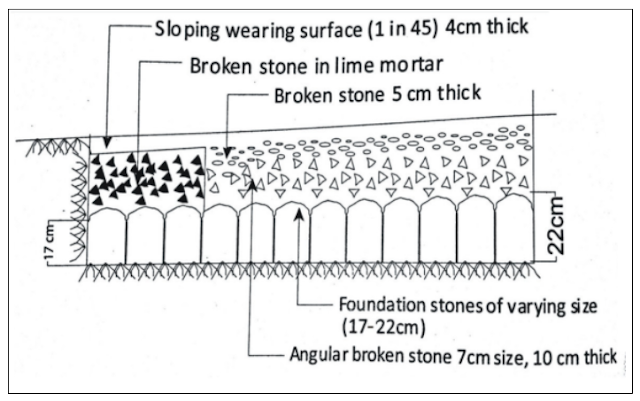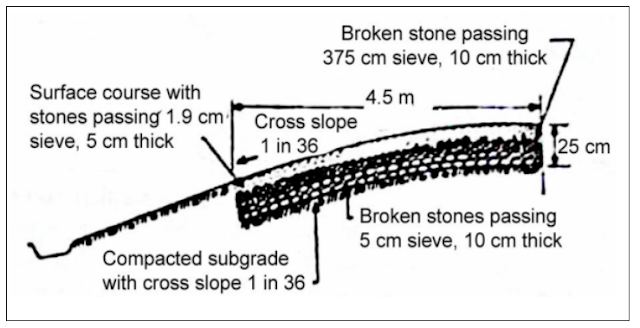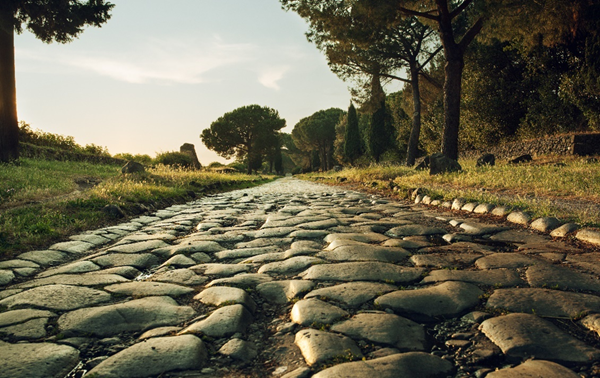Search This Blog
Most Popular
What is Development Length (Ld) in Construction?
August 14, 2025
Categories
- Building Construction (87)
- Building Materials (85)
- Columns (2)
- Concrete Beam (3)
- Concrete Construction Techniques (6)
- Concrete Mix Design (14)
- Concrete Repair (14)
- Concrete Slab (11)
- Construction Equipment (17)
- Construction News (7)
- Design of Structures (18)
- Engineering Drawing (1)
- Estimation (3)
- Geotechnical engineering (26)
- Highway Engineering (11)
- Innovations (34)
- Material Testing (11)
- Matrix Analysis of Structures (2)
- Mechanical Engineering (3)
- Strength of Materials (2)
- Structural Analysis (13)
- Structural Design (24)
- Structures (17)
- Transportation Engineering (9)
Development of Roads | History of Highway Construction
Team Prodyogi
April 03, 2024
We know that the invention of the wheel between 3500-5000 BC changed how we travel. Roman roads were a big deal for today's roads. When people say "All roads lead to Rome," it shows how important they were. Later on, the French, British, and modern macadam roads came along.
In this article, we will discuss the development of highway roads through history, mentioning the important features of each type of road.
1. Roman Roads
During Roman civilization, Romans built many roads from stone blocks with considerable thickness as shown in Figure 1.
 |
| Fig.2. Roman Roads |
The main features of the Roman roads were:
- Roads were built straight regardless of the gradients.
- Roads were built after removing soft soil and when a hard stratum was reached.
- Strong and larger size aggregates were put at the bottom and the stone size gradually decreased on moving towards the top.
- The total thickness of the Roman roads was high- between 0.75 m and 1.2 meters
2. Tresaguet Construction (France)
Tresaguet is a French Engineer who used large pieces of quarried stone for the lower level of the pavement and smaller pieces of broken stone were used to fill the space between the larger stones.
.png) |
| Fig.3. Tresaguet Construction (France) |
The pavement structure was placed on a trench to keep the running surface level with the surroundings. This created drainage issues. This design also faced differential settlements creating bumpy surfaces. The thickness of Tresaguet roads was only in the order of 30 cm with a cross slope of 1 in 45.
3. Telford Construction (British)
Telford construction is almost similar to Tresaguet construction. The only difference is that the Telford roads keep the formation surface leveled and the supper surface is cambered gradually using proper size stones. Stones were properly placed to interlock and bond.
Here, initially, a level subgrade was prepared to a design width of 9m. Large foundation stones of size 17 to 22 cm were laid with hand over the subgrade, in such a way that large stones at the center and the smaller stones at the edges.
 |
| Fig.4. Telford Construction |
The binding layer of the wearing course was constructed on top using gravel for a thickness of 4 cm. The cross-slope used is 1 in 45. Telford also provided cross-drainage.
Telford construction required more masonry work than Tresaguet and was stronger. The running surface has 20 mm gravel with a thickness of 150 mm.
4. McAdam Road
John McAdam put forward an entirely new method of road construction. Keeping the difficulty of previous construction techniques and maintenance issues, McAdam realized than 250 mm layers of well-compacted broken angular aggregate stones would provide the same strength as that of pavements made of the large foundation stone.
 |
| Fig.5. McAdam Road |
The continuous distress study made him use a stone size smaller than the tire width thereby obtaining a good running surface. The cross-slope provided was 1 in 36. McAdam road construction methodology has the following ideas:
- The use of angular aggregates helped to have strong interlocking
- Well-graded materials were used to improve impermeability and ease of compaction
- A strong impermeable durable binder was needed to keep the surface intact.
Continue Reading On: Highway Engineering
Most Visited
Soil Sampling Methods| Undisturbed and Disturbed Samples
November 08, 2023
Boring Methods for Soil Exploration
November 02, 2023
Steel Column Connected to Concrete Masonry Wall
October 11, 2017
What are Infiltration Wells?
April 15, 2024
How to Choose Good Quality Aggregates for Construction?
August 10, 2021
Terzaghi's Equation: Soil Bearing Capacity for Foundations
March 02, 2022
Structure of Timber |Macrostructure and Microstructure
March 22, 2024
Search This Blog
MUST READ
What is PERT? Objectives, Pros & Cons
September 10, 2017
Terzaghi's Equation: Soil Bearing Capacity for Foundations
March 02, 2022
Contact Form
Footer Menu Widget
Created By SoraTemplates | Distributed By Gooyaabi Templates


0 Comments
Commenting Spam Links Are Against Policies